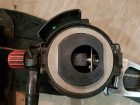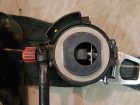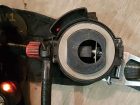
In the world of fire fighting, we are becoming numb to a lot of the alarms and devices that we are equipped with on our personal protective equipment (PPE). This numbing effect is what is causing us to become de-sensitized to the alarms, vibrations, chirps, whistles and so on.
The SCBA is one piece of PPE that has many alarms on it to help warn us of impending danger, elevated temperatures and, of course, no movement. The one common alarm that we have on every SCBA is the low-air alarm.
So, what is the purpose of a low-air alarm on our SCBA? Is it the alarm that tells us when it is time to get out? Or, is it the alarm to tell us how much air we have left?
These two questions can serve as training lessons for any department, as it will spur a great debate and hopefully highlight what the correct answer is.
The low-air alarm was designed and installed to inform the user of how much air he or she has left in his or her cylinder – it is not an alarm to tell you when it is time to get out, because you are supposed to be out of the building or on your way out when the low-air alarm sounds.
Too many firefighters are relying upon the low-air alarm to tell them when it is time to leave a building – and for the most part, they are leaving the building well after the low-air alarm has gone off. The low-air alarm is designed to be an audible, and for some SCBA’s, a tactile alarm as well – which signals to the other firefighters that someone is running out of air. It is also primarily sounding/vibrating to tell the user – you are getting low on air.
The evidence of low-air alarms not working in terms of their intended purpose is the high rate of firefighters getting caught/trapped in buildings, running out of air and then succumbing to a serious injury, or worse, death.
In light of this, NFPA standards for SCBA changed the requirements for the low-air alarm to go off at 25 per cent up to 33 per cent. This increase in the end-of-service alarm has prompted many fire departments to increase their air cylinder capacities – one-hour cylinders were becoming the trend to combat the low-air problem and to give firefighters as much air as possible to do their job. It also meant that the 2216 SCBA system was going to become insufficient in terms of providing enough air capacity for the end user.
Another NFPA standard change was the integration of the Heads-Up Display (HUD) in the facepiece of the firefighter. This added component allows the user to visually see his or her air consumption status at all times. Every SCBA manufacturer incorporated this extra safety feature into the facepiece somehow with a series of lights; green meaning 50 per cent and more of air, yellow indicating 50 per cent of air left, and flashing red indicating less than 33 per cent of air remaining.
One particular SCBA manufacturer also added proximity lights on the back of the SCBA as well as on the front of the chest gauge so that all firefighters around can see exactly what the air status is for that particular user. When the air in the cylinder starts to deplete away, the lights that are displayed on the HUD are also displayed on the SCBA for a complete 360-degree situational awareness factor: green, yellow and red.
In basic training, we instruct our new firefighters to monitor their air consumption when they are wearing an SCBA by periodically checking their air gauge. This periodic check is a part of being situationally aware which lends into knowing how much air you are using and how much you have left.
Unfortunately, there has been a parting away from this training as time marches on for the firefighter – the periodic check starts to wean away, and the end result is the low-air alarm going off while still inside the building.
The intended purpose of the low-air alarm is to provide the firefighter with enough air so that if he or she were to find themselves in a situation where he or she had to get out of the building, the individual would have enough air to get out and, if the firefighter got into trouble, still have some air left to bide some time for the RIT rescue.
The school of thinking in this arena needs to be changed and enforced so that the culture of the fire department is progressing for the better – this starts at the top with enforcement.
An example of this is with the Mount Lebanon Fire Department in Pennsylvania where Fire Chief Nicholas Sohyda has a strict rule concerning low-air alarms; exit a building with your low-air alarm going off and you must report to him to explain exactly why it occurred.
The consequences are progressive and severe. Why this method? The chief wants to show his membership the seriousness of not having enough air when the time comes and relying upon the low-air alarm to “tell you” that it is time to leave.
The change in culture also can take place from the bottom up – as Captain Michael Langford always says, “Water boils from the bottom up.”
The firefighter can have an impact on changing the culture by practising air-consumption checks all the time when using his or her SCBA. By doing this, others will see and hopefully follow suit.
There was a time when air-consumption testing took place to show each firefighter how much air he or she was using in a set amount of time of 30, 45 and/or 60 minutes. This was dictated by the type of cylinder each department was using. This drill gave valuable information to each firefighter so that he or she would have a mental and physical feel for how much air the individual would use before the low-air alarm goes off. Perhaps this testing and training should be returned to on a regular basis to help build and reinforce muscle memory.
With all of the changes instituted by NFPA and the technology incorporated into the SCBA, there is no excuse for any firefighter to leave the building with their low-air alarm going off.
Mark van der Feyst has been a member of the fire service since 1999 and is a full-time firefighter in Ontario. He teaches in Canada, U.S. and India, and is an FDIC instructor. He’s lead author of the Residential Fire Rescue book. Contact Mark at Mark@FireStarTraining.com.
Print this page
Advertisement
- Well Being: Deep breathing 101: how to manage stress
- Firelines: Vibrant training needed for meaningful retention



